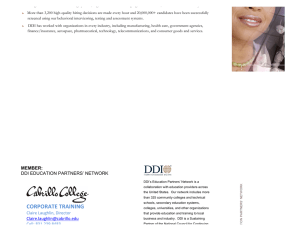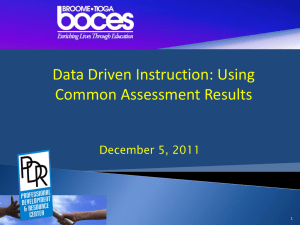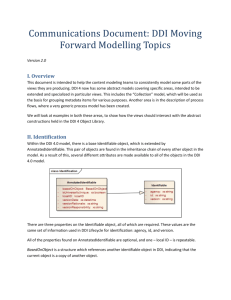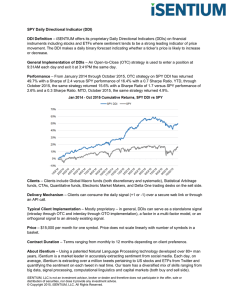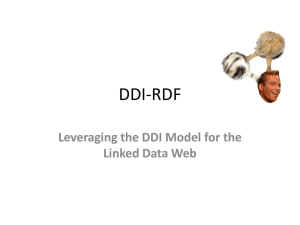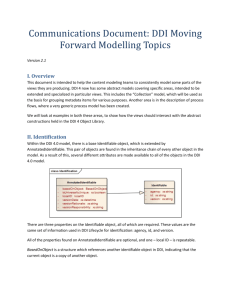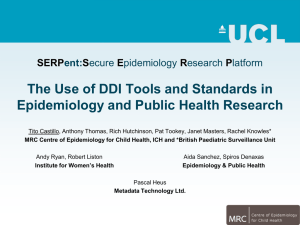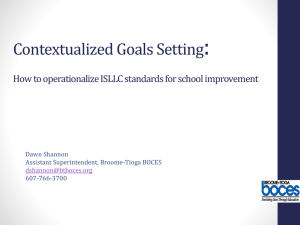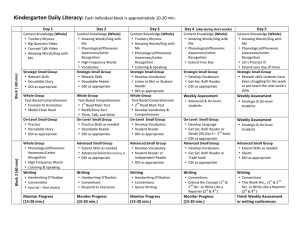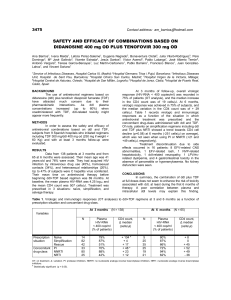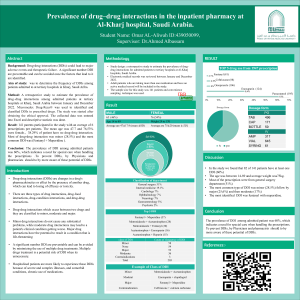DDI Session 3 March 27
advertisement
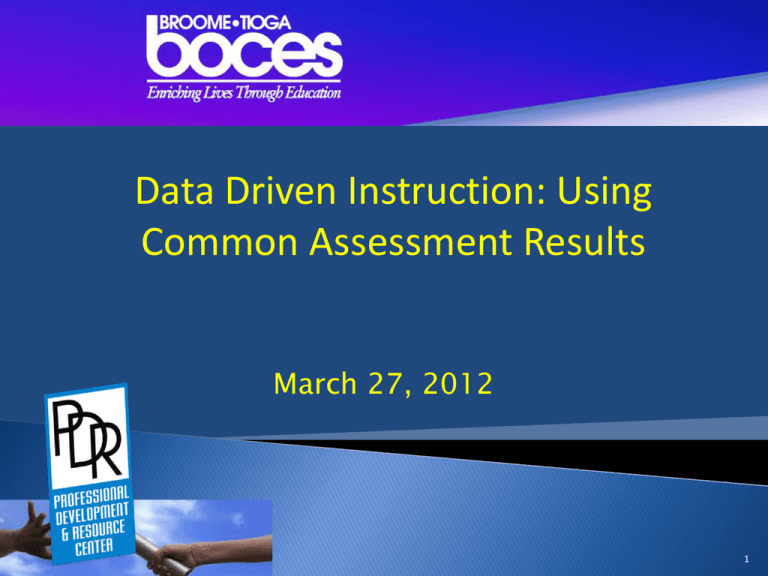
Data Driven Instruction: Using Common Assessment Results March 27, 2012 1 2 Data Driven Culture Common Assessments Leadership (Facilitation & Accountability) Analysis Action 3 A favor http://www.youtube.com/watch?v=ad5pKiflw ew&feature=related What are his beliefs? What does he do? Explain the connection between DDI and the Common Core Standards Explain how examination of student work can result in data that informs instruction Identify specific action steps for implementing DDI in your building/ district Teacher/ Leader Effectiveness Common Core State Standards Evidence of Student Learning Data Driven Instruction 6 The Common Core for Literacy impacts ALL disciplines! • Balancing Informational and Literary Text • Building Knowledge in the Disciplines • Staircase of Complexity • Text-Based Answers • Writing From Sources • Academic Vocabulary Draw a picture or symbol for each Grades PK-5: 50% Literary Text 50% Informational Text Grades 6-12: 70% Informational Text by 12th Grade Balance of Just Right Text and Grade Level Text (with high levels of support for access to higher level text) Students have rich and rigorous conversations which are dependent on a common text. Teachers insist that classroom experiences stay deeply connected to the text on the page and that students develop habits for making evidentiary arguments both in conversation, as well as in writing to assess comprehension of a text. To Persuade Grade 4 30% Grade 8 35% Grade 12 40% To Explain 35% 35% 40% To Convey Experience 35% 30% 20% Tier 1 Words: Common, every day words Tier 3 Words: Content area specific words Tier 2 Words: Typically not defined in the text Define, describe, principled, theory, etc. What are the 6 shifts? What evidence of the 6 shifts do you see in student work? What are next steps for possible instructional action plans as a result of what you noticed? How will you facilitate the development & implementation of these action plans? 16 Describe examples of evidence of the 6 shifts you might see when looking at student work. 17 ELA writing task Math ELA writing task reading task Science SS task Task 18 What can the student do? What is missing? Student Name: ----------------------------Student Name: ----------------------------- 19 Identify patterns of strengths & weaknesses Identify standards that students are meeting & standards (or elements of standards) for which students need more targeted instruction & support Identify whole group needs, small group needs, and individual needs 20 Notice patterns that are emerging from the data Identify logical starting point(s) 21 Choose a focus area Brainstorm strategies Choose 1-3 strategies to start with Agree on an action plan √Who will do what? √When will it be done? √What will you have students do? √What student work will you collect to assess next? Implement plan… and the cycle continues…. 22 Harpursville Elementary- Next Steps Union Endicott Middle School- Next Steps Vestal Middle School- Next Steps 23 Review the student responses Label each shift that you see on the samples 24 25 DATA DRIVEN DIALOGUE By BRUCE WELLMAN & LAURA LIPTON Exploring/ Discovering Organizing/Integrating ACTIVATING & ENGAGING Surfacing experiences, possibilities and expectations With what assumptions are we entering? What are some predictions we are making? What are some questions we are asking? What are some possibilities for learning that this experience presents to us? EXPLORING & DISCOVERING Analyzing the Data What important points seem to “pop out”? What are some patterns, categories or trends that are emerging? What seems to be surprising or unexpected? What are some things we have not yet explored? ORGANIZING & INTEGRATING Generating Theory What inferences, explanations, or conclusions might we draw? What additional data sources might we explore to verify our explanation? What are some solutions we might explore as a result of our conversation? What data will we need to collect to guide implementation? When we serve as a TEAM, There are: Benefits for the members Benefits for the team Benefits for the school district Benefits for the CHILDREN Strong, clearly focused leader Individual accountability Individual work products Runs efficient meetings Measures its effectiveness indirectly by its influence on others (student learning goals) Discusses, decides, delegates Shared Leadership roles Individual and mutual accountability Collective work products Encourages open-ended discussion and active problem solving meetings Measures performance directly by assessing collective work products Discusses, decides, does real work together Powerful Inquiry based Positive Impact teaching and learning….. Looks like Sounds like Meet every Tuesday and Thursday to review the next assessment or to review the results of the last assessment, etc. (DDI cycle) “I am trying to figure out what I can do in my next unit to help John and Joe understand why it is important to cross multiply first before…” Design action plans together Use an agreed upon protocol for looking a student work “67% of my students have mastered identifying the main idea. By the end of this next unit, I am hoping to be at 100%.” Record keeping that includes student achievement, instructional strategies developed, etc. “I am wondering about…could you give me some thoughts or suggestions?” 35 Where are you now? What could be next steps? What support is needed? Data Driven Culture Common Assessments Leadership (Facilitation & Accountability) Analysis Action 36 Observations of elements of DDI already in place in district (data teams, team meetings, analysis of student work, etc.) Staff overview/awareness session of components of Data-Driven Instruction Meet with leadership teams Team training for existing teams – review norms/protocols/process for analyzing student work What do we have in place? Where are our strengths? What can we start with? What needs to be scheduled? What PD will be needed? Who can provide this? 38 On-going follow-up support with regional cluster groups and/ or in-districts Regional Literacy Task Development Regional Math Task Development 39 Observations of elements of DDI already in place in district (Data teams, team meetings, analysis of student work, etc.) Staff overview/awareness session of components of Data-Driven Instruction Meet with leadership teams Team training for existing teams – review norms/protocols/process for analyzing student work Take a few minutes to respond to the questions on your “Ticket Out the Door.” The thinking you share will help to guide our future sessions. Thank you! Pat and Jennifer 41
